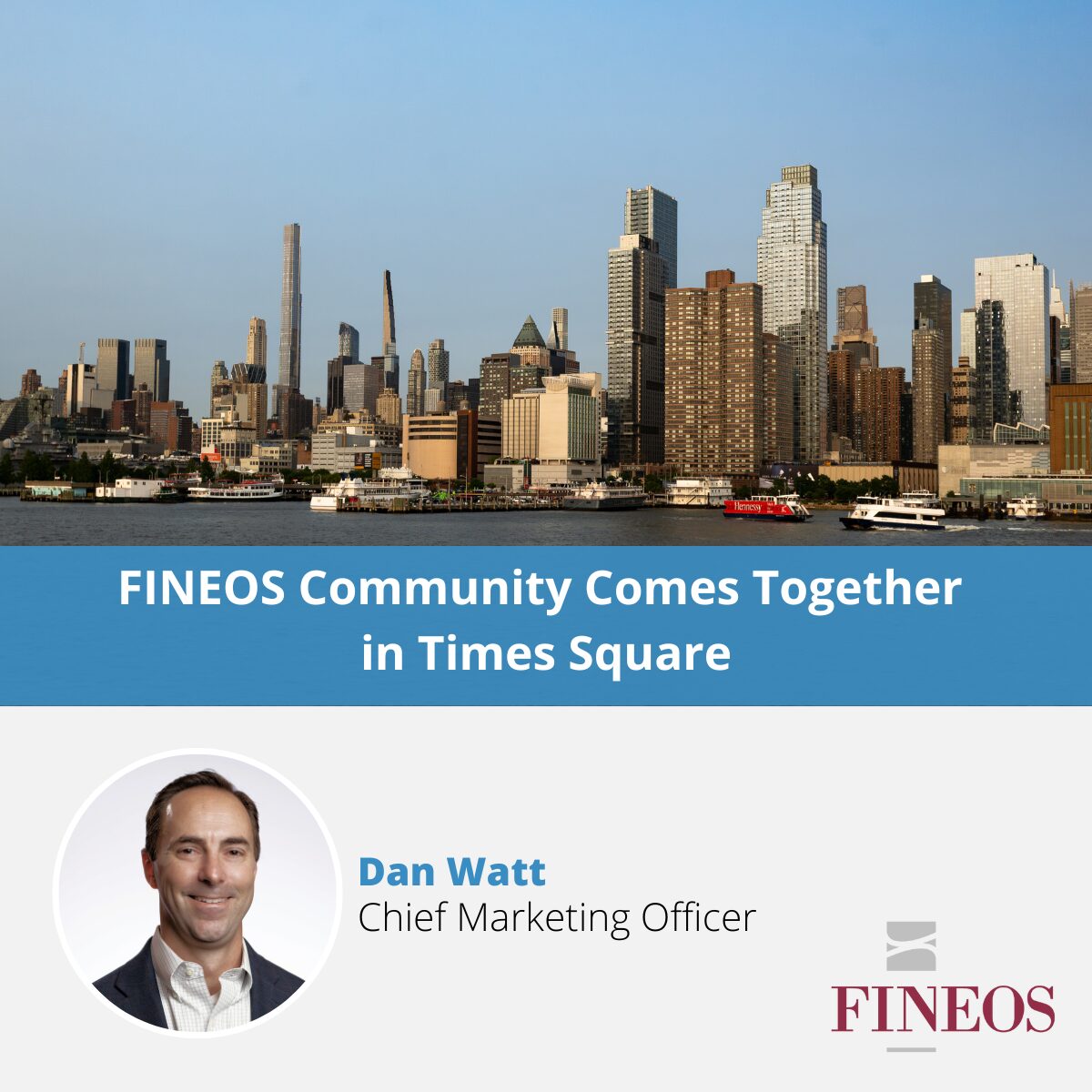In my previous blog, I discussed why legacy admin systems must get out of the way for Life, Accident and Health insurers. For this blog, I’d like to give some personal insights on the selection of a core system and vendor.
It is crucial to get the steps and interactions right in a core systems selection process, as the consequential outcome has very significant impact on an insurance carrier. I’ve been in the core systems insurance vendor space for over 25 years and during this time I have seen the good, the bad, and the ugly when it comes to core system and vendor selection processes.
There are very few modern core systems vendors in the life, accident and health space (fewer still in the group insurance market). Although there are few of us in the space, it still takes a lot of focus, time, and effort for a carrier to identify a core system and vendor partner that will work for and with them.
Given the size, capability and cost of core systems, they tend to remain in place for a minimum of 10 years (and ideally much longer!) Therefore, core system selection is not something a carrier undertakes frequently. The skills and experience required for selecting a core system are often not plentiful in-house within the carrier. However, it is such an important process and decision for carriers that they must invest some of their best and most experienced people to conduct the process and make the selection a success. The selection, ongoing collaboration and long term relationship between the vendor and carrier must meet the immediate and long term needs of the market, the carrier, and most importantly, the protection, care and service needs of the end customer.
Carriers should be looking at the strength, flexibility, fit and depth of the core system being evaluated as well as the ability of the vendor to support them in the medium and longer term. Today, they rely on legacy core systems that have been developed and enhanced over the past 30 or 40 years. Even though these systems are well past their ‘sell-by date’ it will take a functionally rich and flexible modern core system, as well as strong ongoing research, development and support from the vendor partner, to fully replace these old work-horse systems. The selection and implementation of a new core system is an ideal opportunity to do new things, as well as transform the business for the future and that means the ability to continually transform, as we live in a world where change is a given and will only accelerate.
 In some ways, the vendor and core system selection process is analogous to that of a person choosing a life partner. On a first date, a person tends to dress their best, discuss only their strongest assets, and generally try their best to impress their potential partner. However, most people don’t decide to marry someone on their first date. For those that do choose quickly and impulsively, the results are often disastrous – they become quickly disillusioned once they begin to see the reality of their partner as less than the idyllic one they saw in those first weeks. Yet, insurers often choose a potential lifelong vendor partner using a cold formal selection process in a setting where the vendor is showing off their best features and qualities while also making big promises; those they believe the insurer will fall for. Sometimes, as in life, these relationships can work out but often they are not successful and don’t live up to the first date!
In some ways, the vendor and core system selection process is analogous to that of a person choosing a life partner. On a first date, a person tends to dress their best, discuss only their strongest assets, and generally try their best to impress their potential partner. However, most people don’t decide to marry someone on their first date. For those that do choose quickly and impulsively, the results are often disastrous – they become quickly disillusioned once they begin to see the reality of their partner as less than the idyllic one they saw in those first weeks. Yet, insurers often choose a potential lifelong vendor partner using a cold formal selection process in a setting where the vendor is showing off their best features and qualities while also making big promises; those they believe the insurer will fall for. Sometimes, as in life, these relationships can work out but often they are not successful and don’t live up to the first date!
As discussed previously, there has never been more pressure on life, accident and health carriers to address the limitations of their legacy core systems while also transforming their business. Carriers accept they have problems to address today and know they need to do this quickly, but the system and vendor evaluation is an important process and an expensive decision if they get it wrong. As a direct consequence, decisions are being made more and more by team consensus within carriers. A leader will want to ensure their team and internal business partners are on board with the selection process and the final decision.
In some cases, third parties are introduced to support the evaluation and selection process, which adds an extra dynamic and a decision influencer to the process. It is key, however, for the third party to be a facilitator and not a pushy ‘relationship matchmaker,’ as it is the carrier’s business and IT teams who must live long term with the decision and consequences!
I’m not going to get into all the details and criteria you will want to employ when selecting a system and vendor in this blog, but I will outline some differentiators you should consider when selecting your vendor and core system, as follows:
- What is the culture of the vendor? What drives the vendor (their beliefs, vision and strategy) and how do they behave?
- Will the vendor align and fit with your strategy, team, and organizational goals? Can you work with them, build trust, and truly collaborate? How will they behave in difficult times and will they be dependable and collaborative in finding good workable solutions if the pressure is on? Do they understand your needs and are they bringing you new insights, ideas, and ways of working? Will they be brave and stand up to say “No” when asked to do the wrong thing?
- What is the vendor’s history? Will they be around in the long term?
- How long has the vendor been addressing your market and business lines and do they have many customers using the product you are evaluating who are like you? Are they investing enough in R&D and are they of a size and shape to ensure their ongoing healthy growth so they can look after your needs?
- Is the vendor in control of their own destiny or tied into someone else’s technology, services, or commercial agenda?
- Is it within the vendor’s control to make all the right long term commitments to you as the core system custodian? Can they ensure you won’t end up on a technology platform that is no longer suitable for your business? How do they keep their customers up to date with technology and product releases – are any customers stuck on customized versions? Is their technology open and mainstream or proprietary? Can they guarantee you won’t end up being supported by a professional services firm that is not fully committed to the product vendor in the longer term?
- Is the vendor fully aligned and committed to your industry and business lines or do they also serve other insurance industries and business lines?
- Core system vendors who serve multiple insurance industries must manage conflicting priorities, loyalties, skills and resources. Customers, partners, and the vendor’s own employees will keenly watch where the vendor’s resources are being invested. Before starting FINEOS, I worked with a core systems vendor with a P&C policy admin system as well as a Life policy admin system. We were often asked by customers, staff, and partners where we were investing most of our time and money – the Life side or P&C side. Our staff could openly see where the investment was going and where the new sales were coming from. Our single focused industry competitors sold against us by telling prospects they were 100% committed to their industry and not split between two insurance industries. Eventually our P&C sales and resulting investment declined, while our Life sales and investment grew. The company then decided to give up on P&C and focus solely on Life. That decision was crucial in accelerating our growth and giving us the Life admin system market leadership by the second half of the 1990’s!
- What is the origin of the vendor’s product? Is it organic (developed in house) or is it made up of several acquired components and technologies stitched together?
- If a core system is stitched together with acquired pieces, there will be issues and problems with the underlying design, data model, and technology of the integrated system because the original architects, designers, and technologists did not design and build for the eventual integrated solution. There will be overlap, gaps, and bottleneck challenges that will create serious challenges for the vendor and limitations for the carrier.
- If you are a group carrier, is the vendor’s system designed and architected from day one for group insurance?
- To build a group insurance core system requires that you design and build for group business from the outset. You cannot turn a system designed for individual life, let alone one designed for P&C, into a group core system. There has not been one successful example of this anywhere in the world to date. On the other hand, it is possible to add individual life and health line support to a system designed from the outset for group insurance. Last week at our regular global company communications meeting, a Portuguese product development person told us a past employer tried to add support for group insurance business to an individual life/health system. It was a nightmare project and was impossible to run the butchered system in production due to performance issues. Group systems often handle individual products with some workarounds, but the best case is to design for both up front.
Narrowing down your list of potential core system vendors to those who are truly invested in driving your industry and your specific business lines forward is a solid first step in your selection process. Getting to know them is the next logical step.
Don’t underestimate the selection process – the more you invest in your IT and business people getting to know your vendor’s capabilities, the more harmonious and positive your relationship and results will be when you choose your core system and life partner!


